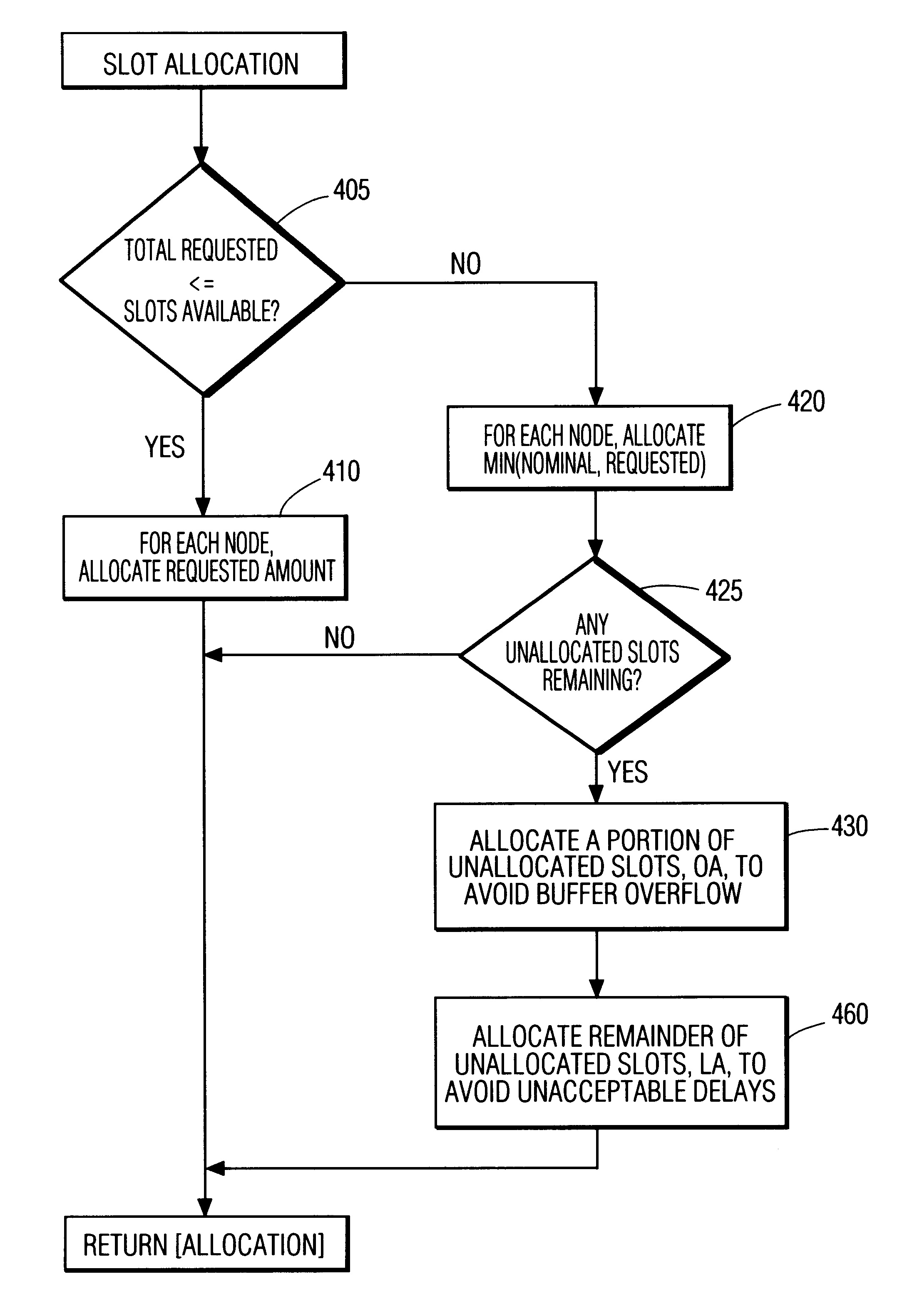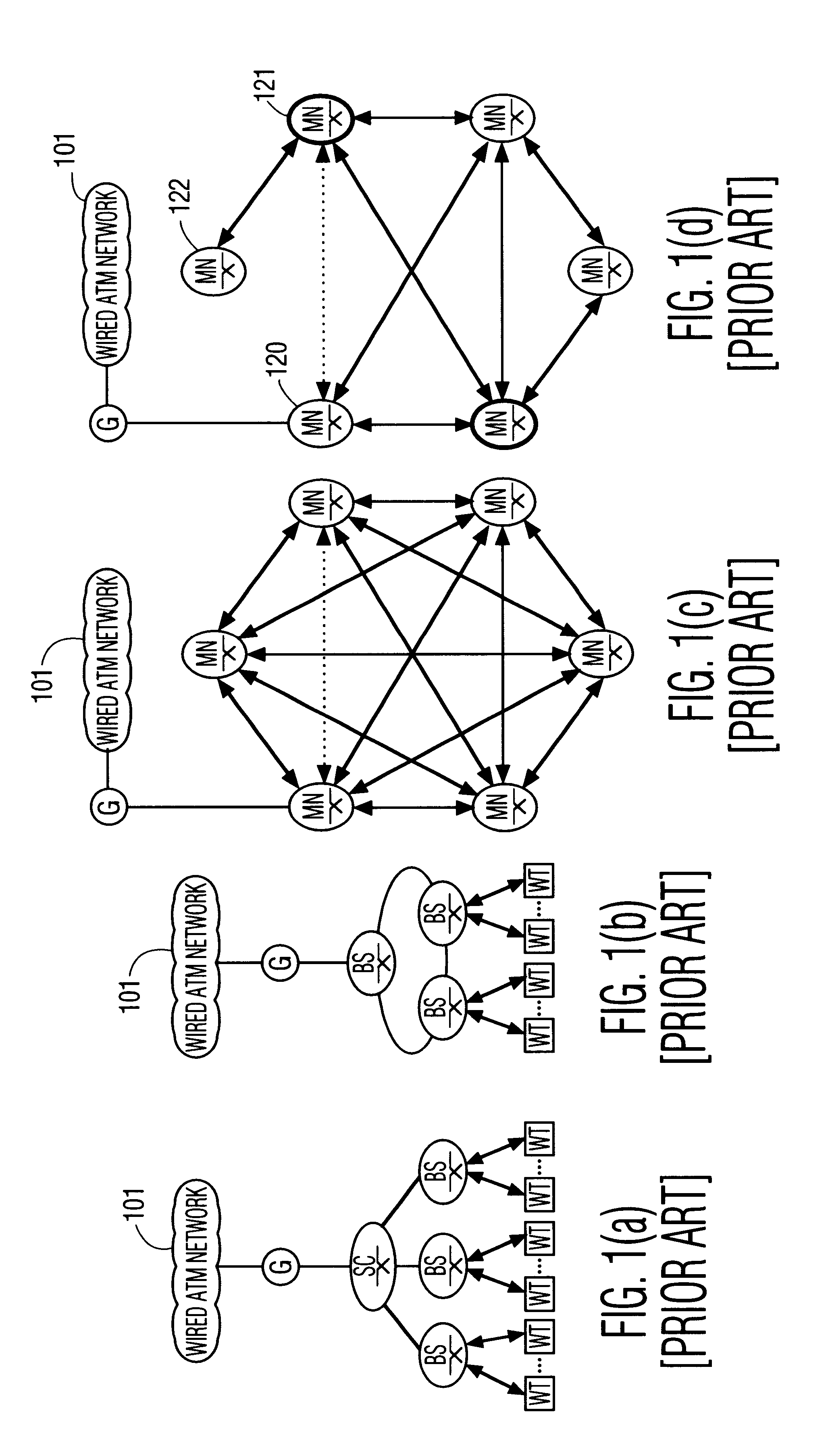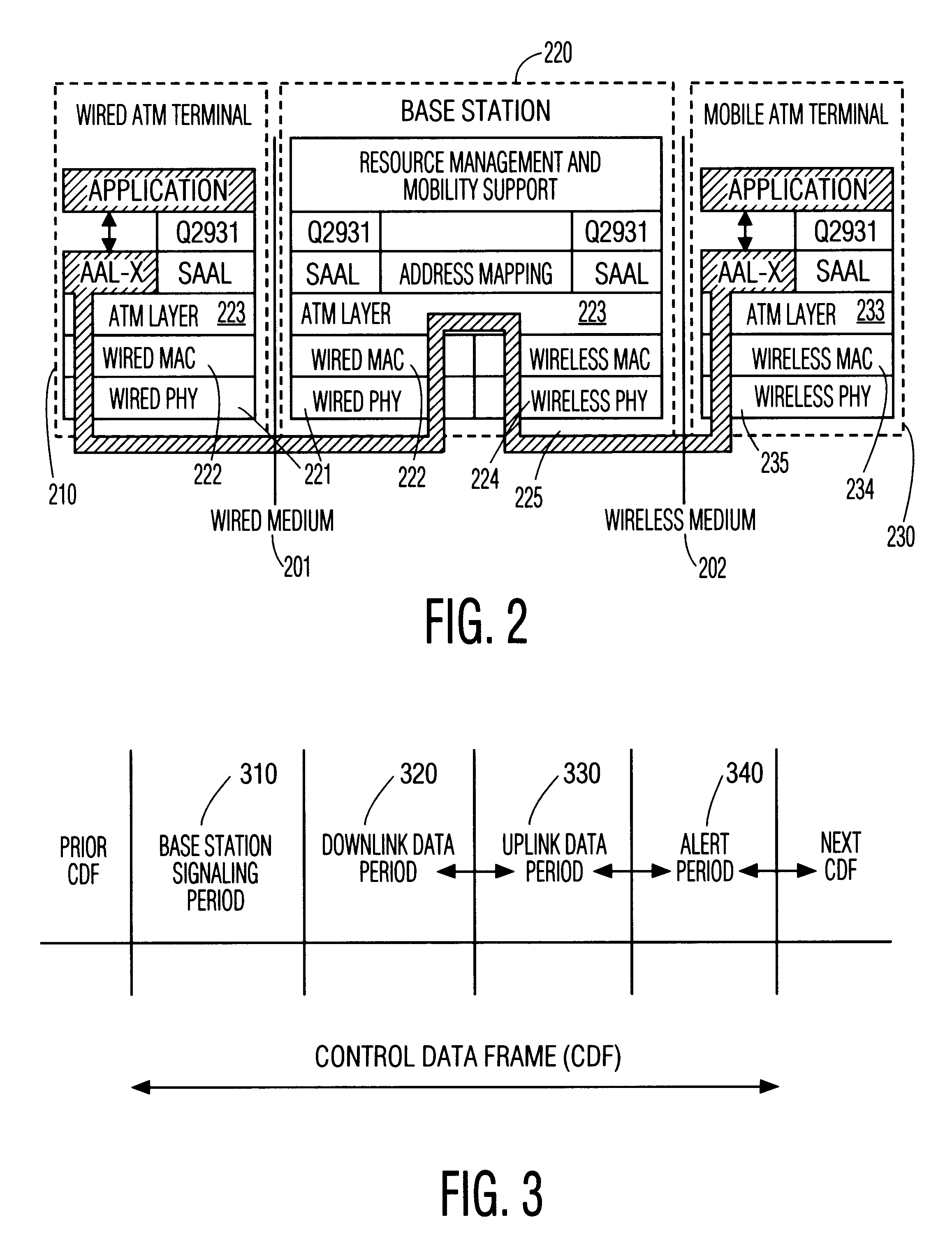Medium access control (MAC) protocol for wireless ATM
a control protocol and wireless atm technology, applied in the field of communication networks and protocols, can solve the problems of inability to tolerate excessive delay, inability to validate the assumptions on which the wired network protocols were developed, and inability to achieve the effect of reducing the number of times of delay
- Summary
- Abstract
- Description
- Claims
- Application Information
AI Technical Summary
Benefits of technology
Problems solved by technology
Method used
Image
Examples
Embodiment Construction
FIG. 1 shows a wireless network, comprised of wireless terminals, WT, base stations, BS, and hybrid stations called mobile nodes, MN. For completeness, also shown is the connection of the wireless network to a wired ATM network 101 through a gateway, G. FIGS. 1a and 1b show a wireless network with a centralized, or base station, architecture. FIGS. 1c and 1d show a wireless network with a distributed, or ad hoc, architecture. In FIG. 1a, the base stations BS are connected to a switching center SC in a tree topology. Packets from the Wired ATM Network 101 travel through the gateway G, and are directed to the appropriate base station BS by the switching center SC. The base station BS transmits and receives packets to and from the appropriate wireless terminal WT as will be discussed subsequently. In FIG. 1b, the base stations BS are connected in a ring topology. A packet is passed from base station to base station, until arrives at its destination base station. The destination base st...
PUM
 Login to View More
Login to View More Abstract
Description
Claims
Application Information
 Login to View More
Login to View More - R&D
- Intellectual Property
- Life Sciences
- Materials
- Tech Scout
- Unparalleled Data Quality
- Higher Quality Content
- 60% Fewer Hallucinations
Browse by: Latest US Patents, China's latest patents, Technical Efficacy Thesaurus, Application Domain, Technology Topic, Popular Technical Reports.
© 2025 PatSnap. All rights reserved.Legal|Privacy policy|Modern Slavery Act Transparency Statement|Sitemap|About US| Contact US: help@patsnap.com



